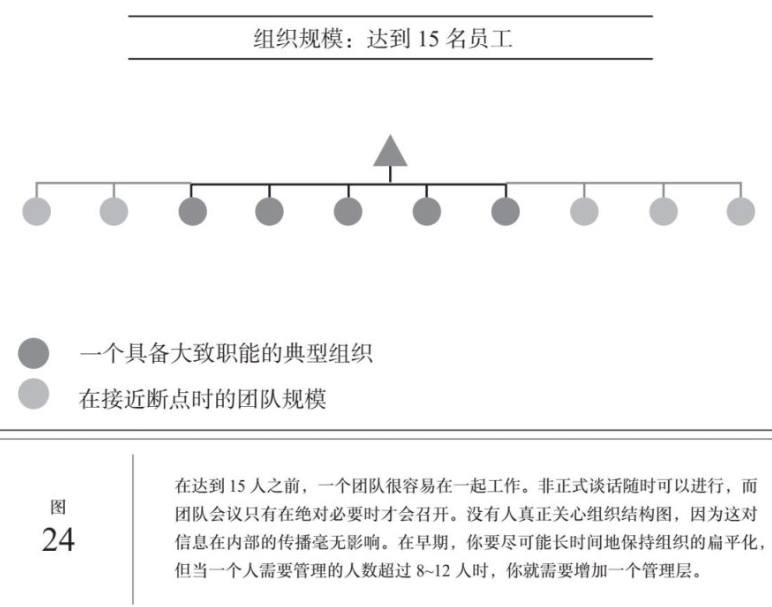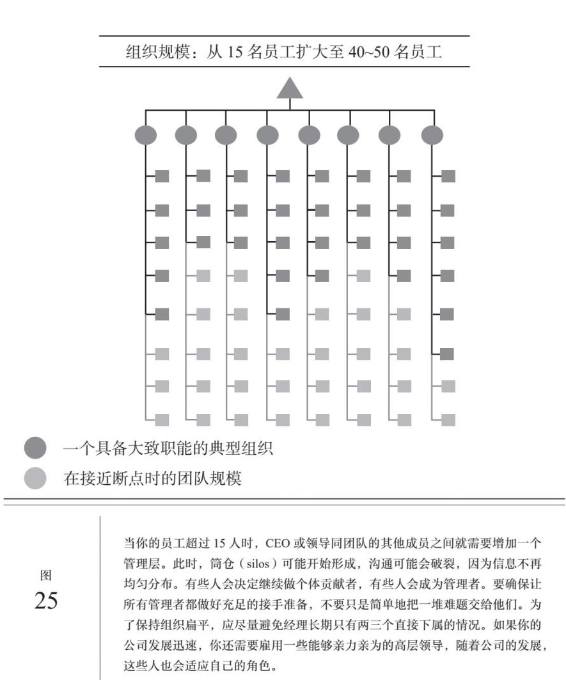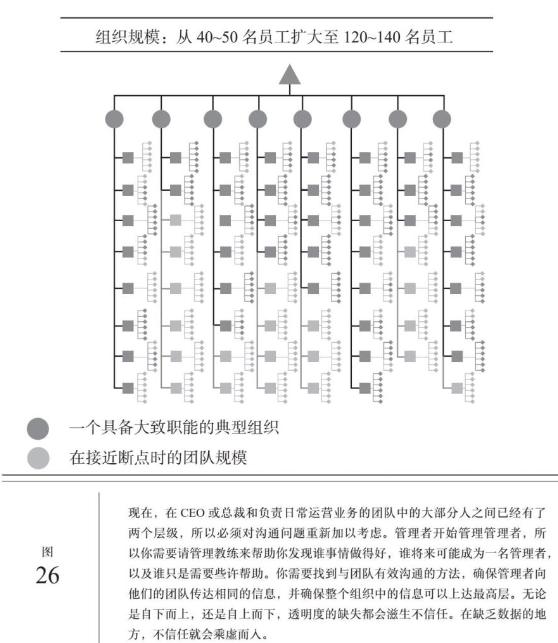Photo by Campaign Creators on Unsplash
About Organizational Size
When the organization is under 15 people, the team can easily work together and maintain a flat structure for as long as possible.
| Method | Description |
|---|---|
| Organization | Everyone is responsible for doing a little, and almost all decisions, big or small, are made by the collective together. No active management is needed. |
| Communication | Happens naturally. Everyone is in the same room (or chat room), and what they hear is likely the same conversation, so there are no information bottlenecks, and regular meetings are not needed. |

50 People Scale
The organization will start to add management layers, and a vertical management system (Silos) will emerge, with internal information transmission not evenly distributed.
| Method | Description |
|---|---|
| Organization | When your team exceeds 15 people, sub-teams will start to form. Some members of your initial core team will have to reduce their responsibilities and start taking on management roles, but the team remains small, so everything stays very flexible and informal. |
| Communication | You will attend meetings for the first time that not everyone can attend, so some people can receive information that others cannot. You need to slightly standardize your interaction methods—take notes, send updates, and ensure everyone stays in sync. |

120 People Scale
Start to generate two or more management levels, requiring reconsideration and design for effective internal communication; managers begin to manage managers, ensuring consistency in the messages conveyed to their teams, and also ensuring that frontline messages can effectively return to the highest level, maintaining high transparency, allowing organizational members to maintain a high level of trust whether from top to bottom or bottom to top.
| Method | Description |
|---|---|
| Organization | When your staff exceeds 50 people, some will become managers of managers (which is completely different from just managing individual contributors), and human resources will truly play a role for the first time. You need appropriate processes to handle promotions, define job responsibilities, levels, and benefits. You also need to clarify various job titles. Functional teams are growing, and sub-teams within larger teams are also forming. Each team begins to develop its own working style around the type of work they do. Specialization is becoming increasingly necessary. Many team members begin to choose a specialized path and focus on specific areas, no longer able to afford the luxury of being a generalist (which is also a double-edged sword). |
| Communication | Internal communication must be formalized, as must meetings with leadership. Conversations in the hallway are no longer effective; you need to hold regular all-hands meetings to keep team members informed and call on executives to unite, influence, and inspire employees. At this stage, the company’s executives must determine their communication style: how to connect with the leadership team and set priorities, how to hold meetings, and how to convey information to the entire company. Leaders begin to meet weekly with human resources to manage the issues arising from the surge in management. |

300 People Scale and Above
| Method | Description |
|---|---|
| Organization | At this stage, you may have multiple projects competing for the same resources. The distance between leadership and the actual product becomes greater, and most of the time is spent on managing the organizational structure and prioritization conflicts between teams. |
| Communication | Meetings may become chaotic, and information transmission can become a bottleneck. You need to adjust the meeting structure and reconsider your communication methods. All-hands meetings will become less frequent, and all meetings are aimed at reinforcing the company’s vision rather than distributing tactical information, which means there need to be other ways for employees to more easily access and disseminate relevant information. In today’s globalized work environment, this remains true and even becomes more important. As remote work and unstructured communication fade away, you must develop communication strategies that are more thoughtful, rigorous, and intentional, and provide everyone with a roadmap for connection. |
Summary
It is not that you did well when you were at 119 people, but when you reach 120 people, everything will collapse. But you must start to formulate response strategies early before reaching the organizational breaking point—at least two to three months in advance, and continue to follow up for several months after the breaking point occurs.
Carefully consider your organizational design and communication methods, recognize whether you need to train individual contributors to become managers or bring in fresh blood, adjust meeting methods, and see if there are changes in personnel scale. You must communicate with employees, broadly communicate. The key is to be coherent and orderly. Whether you are leading a project in a large company or running your own startup, you must guide the entire team through these transitions.
Your company is going through adolescence, but before the first pimple is discovered, you need to have some awkward yet crucial conversations. You can even use cliché language: this happens in every growing, thriving business, and it is very natural, so don’t worry.
You also need to face openly the fear that this transition brings to employees, you, and the company. Acknowledge that you will lose some things, and recognize that these losses will bring considerable pain.
Involve both managers and individuals in this process so that they do not feel shocked and do not feel like some uncontrollable things are descending upon them.
You need their help to get things done well, so they can define, embrace, and accept these changes.
If you can see the future, you can design the future.
